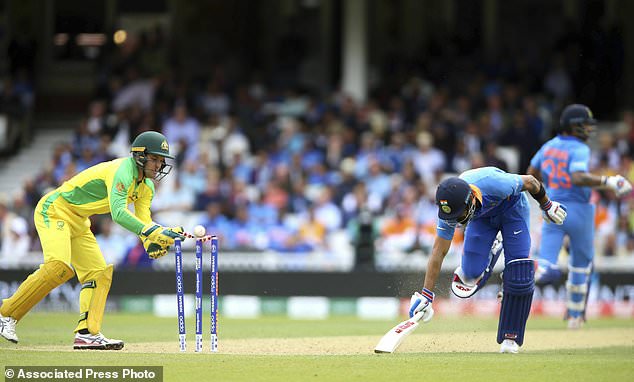The competitiveness of cricket has gone up significantly in the last decade or so. The high fitness levels of cricketers, a lot of economic investments in the game, the involvement of the audience, sponsorships have made it mandatory to raise the standards of decision and management of all the game related aspects. ICC has taken a lot of initiatives in the past few years by incorporating various technologies like Hotspot, Snicometer, spider cameras and many more to make decisions based upon conclusive evidence.
- In World Cup 2019, there are some incidences, as much as 5 have occurred were in the bails have not fallen off the stumps even if the ball has hit the stumps with good impact. One such incidence was in Australia Vs W Indies match where Mitchell Starc bowled a 147 kmph delivery to Chris Gayle which kissed his off-stump yet the Bails remained in the groove intact. This has raised many questions like: Are the Zings Bails favouring the batsmen? Is the weight of Bail too much? The introduction of Zings Bails is one such initiative by ICC to make improve the quality and convenience of TV Umpiring. If a run-out or stumping is affected, the position of a bat is considered when the bails are completely out of the groove. But at times due to weird angles or not so good picture quality, it becomes difficult to analyze the exact moment of dislodging of bails from the grooves. And in this case, no conclusive evidence is established and decisions go in someone’s favour.
So, to remove this inefficiency the Zings Bails are introduced. Zings Bails has a number of LEDs encapsulate in transparent fiber material. There is also a Microprocessor inside each Bail. When the Bails are completely out of the groove the LEDs start blinking. Right at this moment, the microprocessor sends radio signals to the stumps and the LEDs of stumps glow as well. So, at the point of the LED glow, the TV Umpire needs to check the batsman position.
But the concern that has popped out courtesy to many similar incidences is that the Zings Bails do not fall off if the ball strikes the stumps in some conditions. Now the main factors are: How heavy the Bails are? How hard was the impact of the ball? How rigid the stumps are? How deep the groove is?
Generally, two types of wooden Bails were in use Normal (25 grams) for normal conditions and Heavy (50 grams) for windy conditions. But ICC has confirmed that Zings Bails in practice is of 41 grams, hence bails being heavy is not the problem. In the ongoing World Cup, there were 5 instances where the ball hit the stump but the Bails did not fall off. So the possible reasons can be many. David Ligertwood the Director at Zings Bails company has mentioned that over 1000 games have been played using these Zings Bails but such incidences are not frequent, yet he has assured us to look into the issue and resolve it in best possible way. Even though Zings Bails have created these kinds of problems, it has solved the long-running decision-making issues of close runouts and stumpings!
![]()

